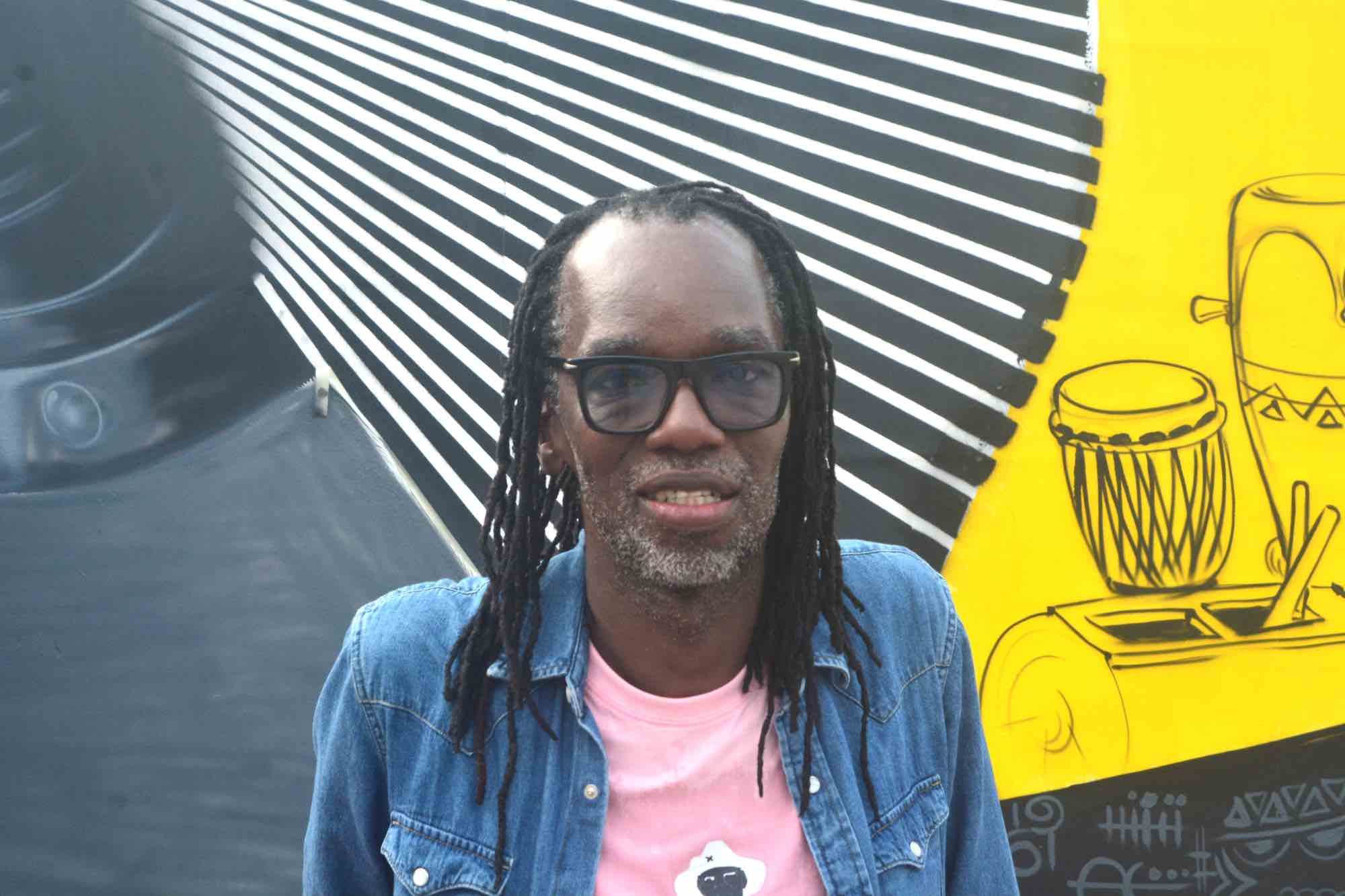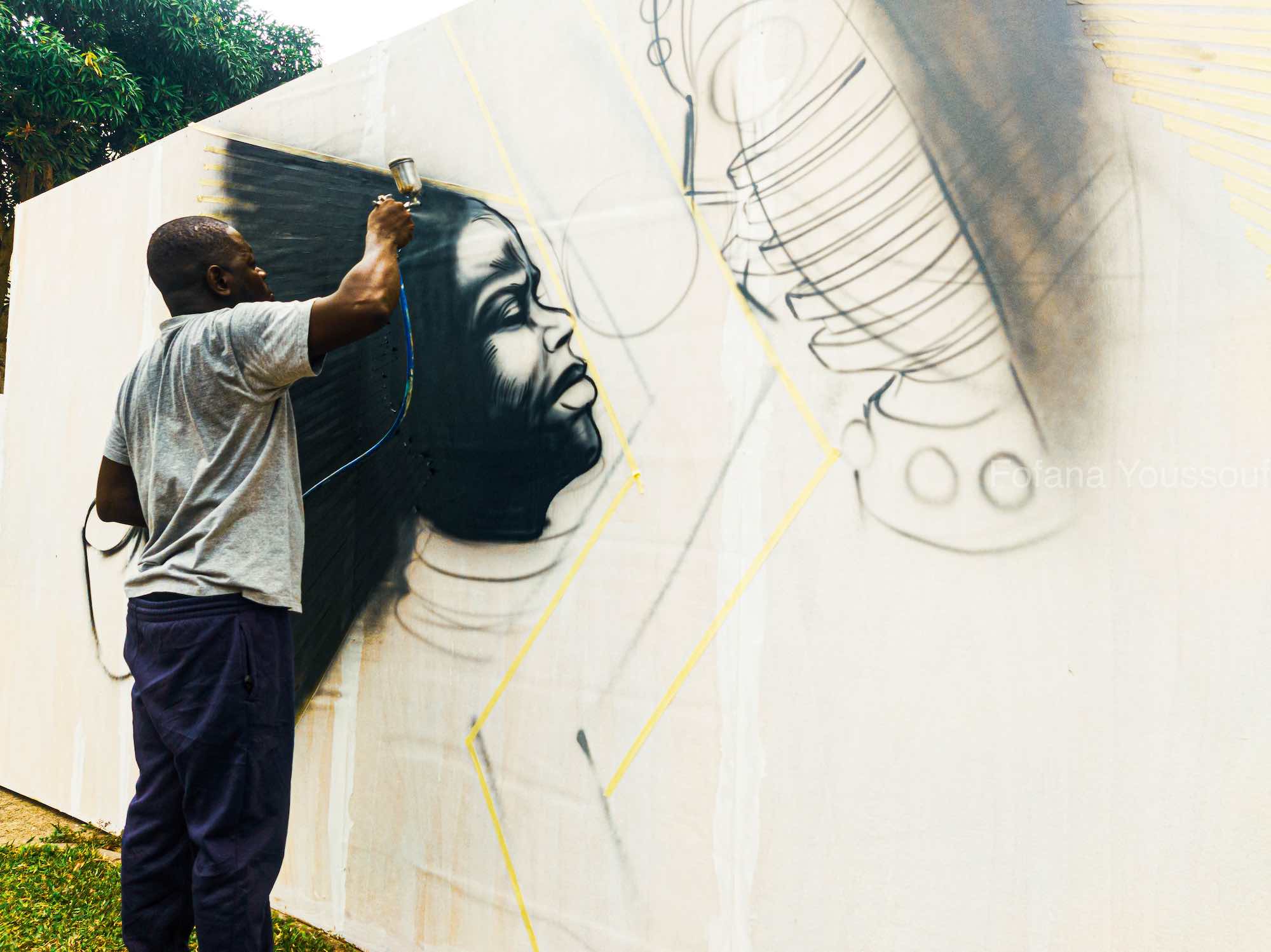
For the past three years, MASA’s Street Art Zone has been a showcase for urban culture including DJ sets, live performances, cultural meetups, graphic arts, urban fashion, and more. Ivorian artist Kajeem, one of the founders of the project, tells us how « the Zone » gives a platform to emerging artists.
By Seydou Koné
“The Street Zone is a stage dedicated to emerging talent » – Kajeem
What is the Street Art Zone at Masa?
If you’re new to the Palais de la Culture site at MASA, the Street Art Zone is the stage for urban culture. It’s the only stage where you’ll find disciplines such as dance, music, graphic arts and urban fashion. It’s a scene dedicated to emerging talent, and one that gives a stage to all the young people who are currently making the African continent proud. And let’s not forget that the majority of the African population is urban. The dominant music is therefore inevitably urban, because this music is the emanation of all these young people. When you arrive, you see that the border between the different artistic practices is very thin, because we go from music to graphic arts, from dance to fashion without any real transition. The Street Art Zone is also the stage where we help young people make the transition from amateur to professional. That’s why you’ll see that it’s not a big group, because when you want to tour internationally, you have to be able to combine the artistic and the economic. In that respect, a band with too many members is a debilitating element. We’re trying to support these young people so that they get to grips with these new technologies. When it comes to digitalization, there’s no scene more in tune with the MASA 2024 theme than the Street Art Zone. Speaking of « Youth, innovation and entrepreneurship », this is what the Zone has been striving to do for three editions of MASA. We can promise you some great evenings, with DJ entertainment, live performances, meetings and more.
How did the idea for the Zone come about, and who were the initiators?
The Street Art Zone came about because we noticed that at one point young people weren’t coming to MASA because they felt that what was on display didn’t concern them. NASH had been approached to create a Hip-Hop stage, in this case MASA Hip Hop. As a result, Professor Yacouba Konaté, who was General Director of MASA, approached me – along with Nash – to ask me to oversee a series of projects, because we’d received a proposal from Cameroon’s Didier TOKO, who’d thought up a stage for urban cultures during MASA. There was also a proposal from Didier Awadi, and Professor Yacouba Konaté wanted all those thinking about the emergence of urban cultures to come together in a committee. And so the idea of the Street Art Zone was born.

A graffiti artist decorates the Street Art Zone in preparations for the MASA 2024
In 2023, the Street Art Zone lost one of its members: visual artist Keulion. Is a tribute to his memory planned for this edition of MASA?
Every year, MASA’s Street Art Zone produces a T-shirt for the current edition. This year, the image on the T-shirts for the 2024 edition is a creation by Keulion, because it was important for us to pay tribute to him. Keulion is a founding member of this space. We couldn’t pass over his departure in silence.
What will be the content of this year’s Zone programming?
This year, we have a large Ivorian presence, around 70%. From abroad, we have Safiath (Niger), Lego (Cameroon), Diyane Adams (Senegal), Flora Paré (Burkina Faso)… In short, big emerging artists.
What are your expectations for the 13th edition of the Street Art Zone?
This may come as a surprise to some, but we’re signing as many artists as possible, because MASA is a market. When we deploy all this energy, it’s in the hope that the artists we’ve programmed will be signed. We won’t be truly satisfied until we see that the artists we’ve supported have signed up for shows on the international scene, where they can defend their creations. Because if you come to the market and sell nothing, you can’t say you’re happy with what you’ve done. Our aim is to network and expand that network.
With photos by aspiring photographers in a training course organized by the MASA and led by photographer Dorris Haron Kasco.
